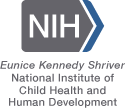USA 1985
This information has been created by the Centre for Time Use Research at the University College London
Samples included
| Sample description | |
|---|---|
| Country: | USA 1985 |
| Study title: | American's Use of Time Project |
| Collector: | Survey Research Center, University of Michigan, Ann Arbor, with funding from The National Science Foundation and the US Department of Health, Education, and Welfare |
| When conducted: | The Whole of 1985 for the mail-back and personal interview samples, only January to June 1985 for the phone interview sample |
| Sampling method and study design: | This survey collected single 24-hour calendar day diaries (starting and ending at midnight) from three samples of private households which own telephones in the USA. The study randomly samples days of the week in equal proportion. All diaries included columns for the starting and ending time of activities, main and secondary activities, and where activities took place. One aim of the original study was to compare diary quality using two sampling and three data collections methods. Two samples, the mail-back and the telephone interview surveys, identified participants through random digit dialling of phone numbers likely to exist in the majority of contiguous states (some smaller states are not included). The third, personal interview sample, was collected from household address lists in 20 primary sampling units from national sample surveys being undertaken at the Institute of Survey Research at Temple University in Philadelphia, and covers a more restricted range of the USA population. The mail-back survey initially collected a household census and persuaded the household to participate over the phone. The team then made an appointment to collect household and personal information over the phone, and posted out diaries for all household members (aged 12+ according to the documentation, but the data include diaries from household members aged 10+). The survey team phoned participants back to remind participants to post back the diaries. Participants completed the diaries during the same day. The telephone and personal interview samples only collected interviews and diaries from one person aged 18+ per household, and these diaries covered the previous calendar day. The telephone survey only collected diaries in the first six months of the year, while the other two surveys collected diaries over the whole of the year. The original sequence files of the telephone and personal interview samples have corrupted and been lost. A significant amount of the publications based on secondary analysis of this survey used combination of these three samples without accounting for the differences in sample design. The American Heritage Time Use Study and Multinational Time Use Study only use the mail-back whole household sample in the survey. |
| Sample size: | 5,358 diarists in total 3,340 mail back diaries; 1,210 telephone diaries; 808 interview diaries |
| Response rate: | Mail back 51%; phone interview 67%; face-to-face interviews: 60% 55.2% responded overall |
| Weighting procedures: | The survey includes weights for each sample. Separate weights balance the sample distribution to the CPS distribution, and balance the representation of the days of the week. |
| Sources of information: | John P. Robinson and Geoffrey Godbey. (1997) Time for Life: The Surprising Ways Americans Use Their Time. University Park: Pennsylvania State University Press |
| Available documentation: | 3-digit activity codes 3 digit codes - spss syntax Codebook |





